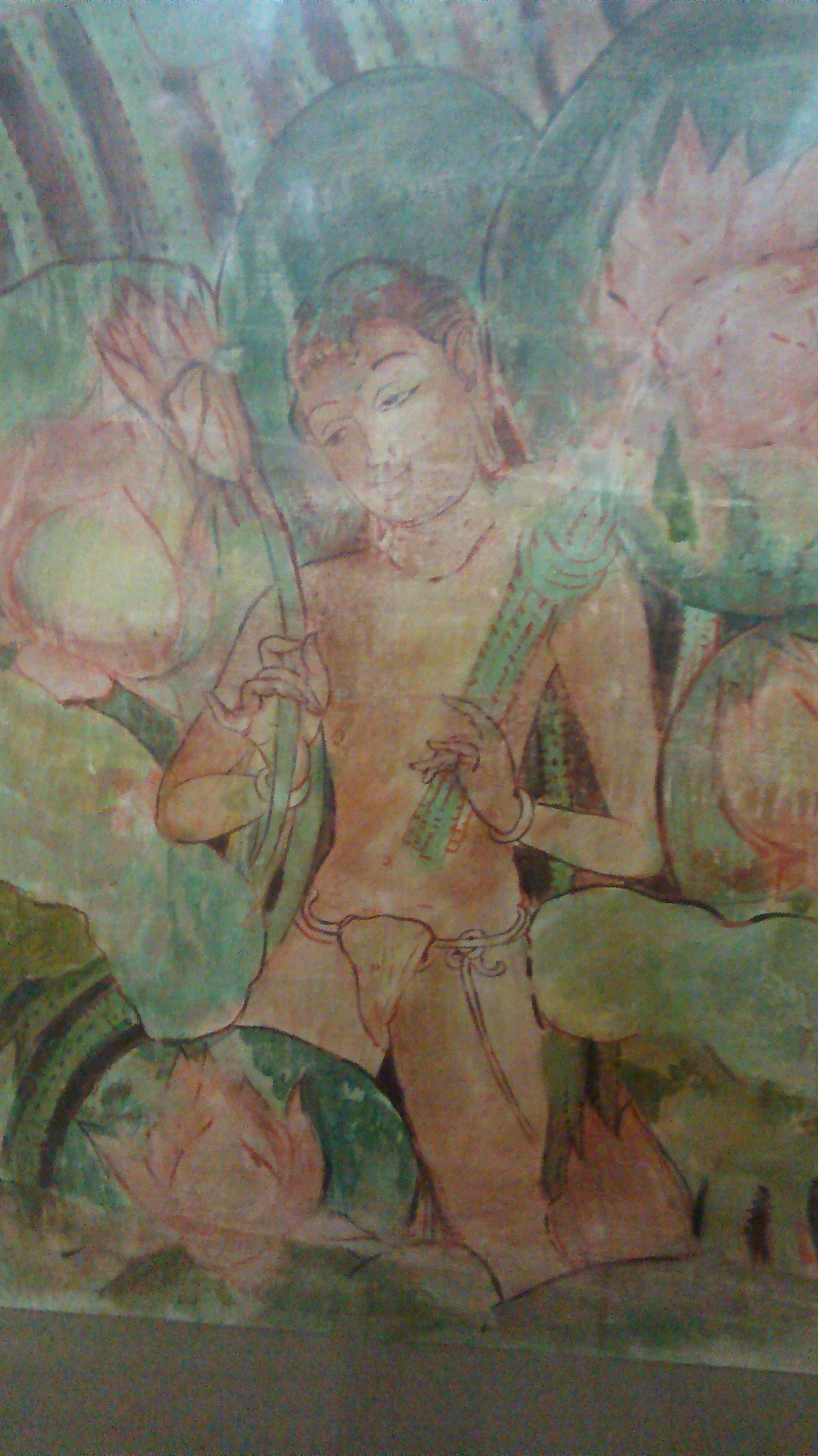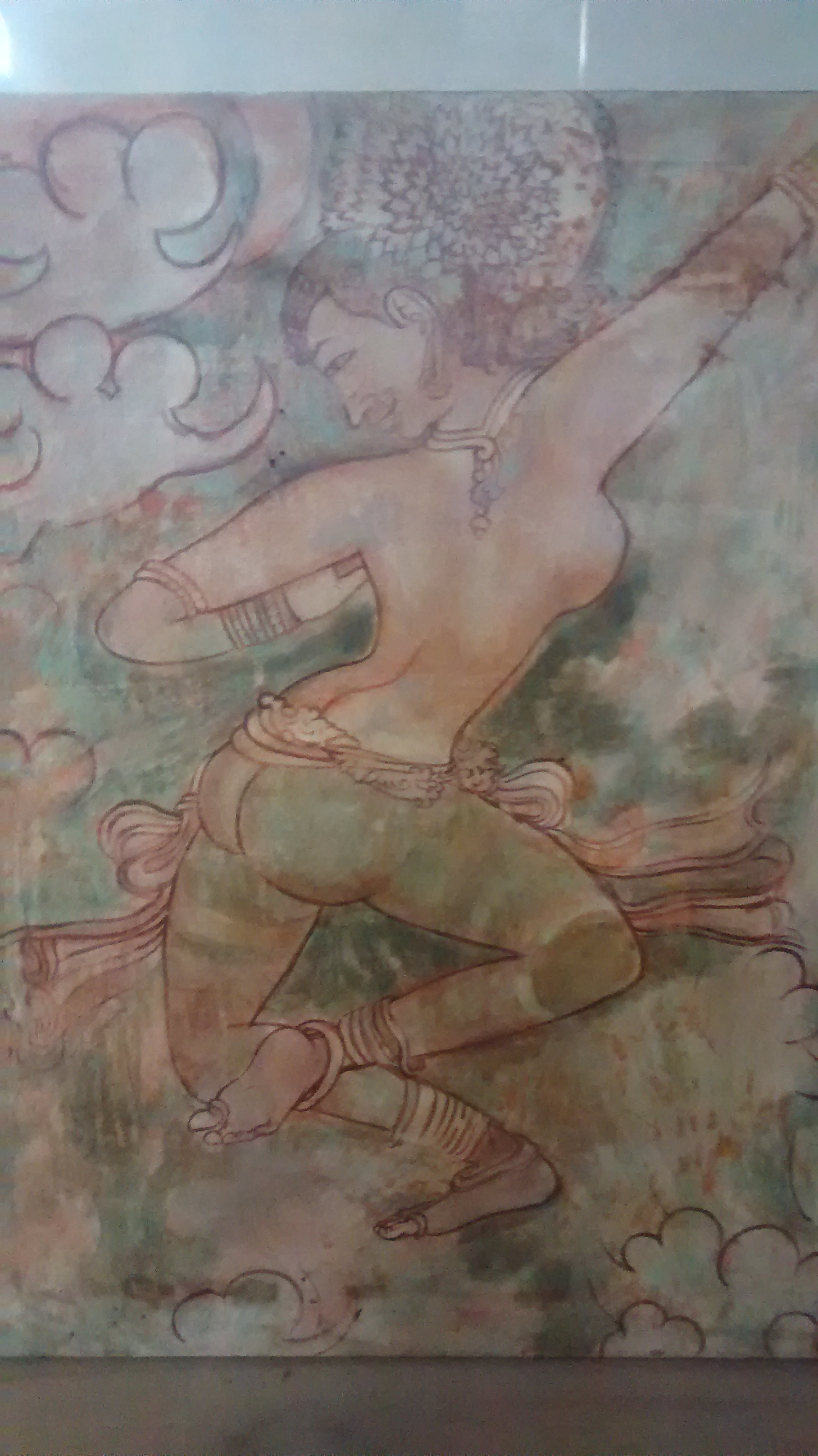Sithanavasal on:
[Wikipedia]
[Google]
[Amazon]
Sithanavasal is a village in the Annavasal

 The famous historical Fresco Paintings (similar to the Ajanta paintings) by the Jain saints are found inside the caves situated here. There are also the Jain beds of rock (Samanar Padukkai)
The famous historical Fresco Paintings (similar to the Ajanta paintings) by the Jain saints are found inside the caves situated here. There are also the Jain beds of rock (Samanar Padukkai)
revenue block
Revenue blocks, revenue circles, ''firka'', or ''patwar circles'' are the local revenue sub-divisions of the various districts of the states of India. These blocks should not be confused with the similar Panchayath union blocks (Blocks) and ''t ...
of Pudukkottai district
Pudukkottai District is one of the 38 districts of Tamil Nadu state in southern India. The city of Pudukkottai is the district headquarters. It is also known colloquially as ''Pudhugai.''
Pudukkottai district is bounded on the northeast and e ...
, Tamil Nadu
Tamil Nadu (; , TN) is a state in southern India. It is the tenth largest Indian state by area and the sixth largest by population. Its capital and largest city is Chennai. Tamil Nadu is the home of the Tamil people, whose Tamil language ...
, India.
Demographics
census, Sithanavasal had a total population of 1629http://www.voiceofbharat.org/Village_Details.aspx?ID=553081 Sithanavasal demographics with 805 males and 824 females. Out of the total population, 650 people were literate.Chithannavasal cave

 The famous historical Fresco Paintings (similar to the Ajanta paintings) by the Jain saints are found inside the caves situated here. There are also the Jain beds of rock (Samanar Padukkai)
The famous historical Fresco Paintings (similar to the Ajanta paintings) by the Jain saints are found inside the caves situated here. There are also the Jain beds of rock (Samanar Padukkai)
Sittanavasal Cave
Sittanavasal Cave (also, Arivar Koil) is a 2nd-century Tamil Śramaṇa complex of caves in Sittanavasal village in Pudukottai district of Tamil Nadu, India. Its name is a distorted form of ''Sit-tan-na-va-yil'', a Tamil word which means "the ab ...
is a rock-cut Jain monastery located at around 60 km from the city - it is an ideal place for a Sunday morning trip. Maintained by the ASI it also sports many attractions in the complex which helps kids have their fun quotient.
A rock-cut Jain temple named Arivar-Koil was carved here which sports paintings made during the 9th century. The most important reason to visit these caves is the paintings. The other attractions are finding out the mysteries behind the vibrating Om and how the Jain monks had lived during the 9th century.
The fresco paintings are similar to the ones found in Ajanta caves and are made using vegetable dye have now disappeared and disfigured due to vandalism until the ASI took over in 1958. There are 287 steps which lead to the top of the hillock, which has around 17 rock beds where the monks used to rest. The ascent to the top gives you a panoramic view of the small town below dispersed with small agricultural fields and lakes. It would make up for a good rock climbing session and prove to be fruitful with the scenery and impressive architecture on top. The historical monuments are a treat to the visitors who want to indulge themselves in a bit of history of the Jain and Pandya periods. Apart from these there are also two parks one the recreational park while the other is a Tamil Divine park and a recreational park which can be a good spot to click holiday pictures. There is also a small lake created for boating.
Though family picnics to such places can be wonderful, a small trip with students accompanied by a historian would be a great hit. You can also engage in historical walks, nature walks along the smaller water bodies where one can spot different birds. This makes up for an ideal mix of history, nature and architecture.
LocationWikimapia
Route: En route to Pudukottai.
Travel time: One hours and 30 mins.
Things to carry: Cameras, umbrellas, water bottles.
Timing: Throughout the day.
Activity: Bird watching, boating, rock climbing, trekking.
Places nearby: Pre historic megalithic burial sites, smaller rock cut caves.
References
{{Jain Caves in India Villages in Pudukkottai district